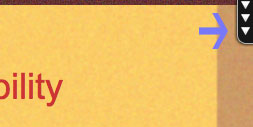Internet content related to topics that interest me seem to surface in cycles. Sometimes I try to figure our why and sometimes I don’t. The digital divide seems to be trending at the moment. I think this is reactionary – other problems dominate the news and then advocates remind us that some of cuts involved programs that helped people needing help. This is only waste in the way some folks think about government spending.
So, here are some of the sources you might explore.
1) Nice overview from Edutopia – I am likely to use this as a source for other sources sometime down the road. My present annoyance is the short sightedness of the BYOD concept.
2) This from the Digital Divide Initiative (new to me). An attempt to explain the long term cost of the digital divide (again the way we address immediate problems keeps setting us back in meeting long term needs). Included are data from some states (Minnesota was the only regional state for me).
3) Finally, there was a recent report from Common Sense media regarding the “screen time” of children before the age of 8. Of course, the topic of screen time goes both ways with both concerns and educational benefits. The report devoted a section to inequities. Check the contrast total media use and technology use by income (you have to explore several sections) – sad – too much passive and not enough active.
OK – there you have it, reading assignments from the “need to share” perspective. Taxes can be good – someone needs to care.
![]()

You must be logged in to post a comment.